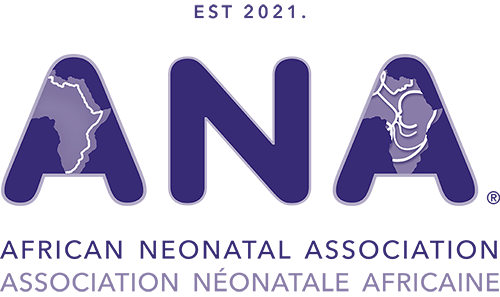- This constitution will be submitted for approval and adoption at a Special general Meeting to be held on 1 September 2021. This constitution was based, in part, upon review of other similar professional organisations’ constitutions, which are used and adapted with gratitude but with no implied liability or responsibility whatsoever upon those organisations. Some of those organisations include:
United South African Neonatology Association
Kenyan Paediatric Association
Pan-African Thoracic Society
ANA Code of Conduct, Policies and Organisational Chart :https://drive.google.com/drive/folders/1B9ZnOrqYx0Sz3txgqNH606Y9RCWoCp_V?usp=drive_link
- This constitution will be submitted for approval and adoption at a Special general Meeting to be held on 1 September 2021. This constitution was based, in part, upon review of other similar professional organisations’ constitutions, which are used and adapted with gratitude but with no implied liability or responsibility whatsoever upon those organisations. Some of those organisations include:
United South African Neonatology Association
Kenyan Paediatric Association
Pan-African Thoracic Society
ANA Code of Conduct, Policies and Organisational Chart :https://drive.google.com/drive/folders/1B9ZnOrqYx0Sz3txgqNH606Y9RCWoCp_V?usp=drive_link
I. The association may close down if at least two thirds of the members voting at a properly constituted general meeting convened for the purpose are in favour of
closing the association.
II. When the organisation closes down it must pay all its debts. After doing this, if
there is any money left over it should not be given or paid to members of the
organisation, but rather to another non-profit organisation with similar
objectives.
I. The association may close down if at least two thirds of the members voting at a properly constituted general meeting convened for the purpose are in favour of
closing the association.
II. When the organisation closes down it must pay all its debts. After doing this, if
there is any money left over it should not be given or paid to members of the
organisation, but rather to another non-profit organisation with similar
objectives.
I. The association may close down if at least two thirds of the members voting at a properly constituted general meeting convened for the purpose are in favour of
closing the association.
II. When the organisation closes down it must pay all its debts. After doing this, if
there is any money left over it should not be given or paid to members of the
organisation, but rather to another non-profit organisation with similar
objectives.
I. An accounting officer will be appointed at the BGM and will audit and check on
the finances of the institution.
II. The Association will register as a voluntary organisation in an African Country as
directed by the Executive Committee and then may open a bank account in that
country in the Association’s name.
III. All financial withdrawals must be approved by both the President and at least
one other executive committee member (excepting the treasurer) and these
authorisations must be made in writing to the treasurer.
IV. The financial year will run from 31 March to 31 March.
V. The associations financial records must be in full compliance with the country in
which the voluntary association is registered.
VI. The Executive Committee may agree to levy an annual subscription,or may
choose not to.
I. An accounting officer will be appointed at the BGM and will audit and check on
the finances of the institution.
II. The Association will register as a voluntary organisation in an African Country as
directed by the Executive Committee and then may open a bank account in that
country in the Association’s name.
III. All financial withdrawals must be approved by both the President and at least
one other executive committee member (excepting the treasurer) and these
authorisations must be made in writing to the treasurer.
IV. The financial year will run from 31 March to 31 March.
V. The associations financial records must be in full compliance with the country in
which the voluntary association is registered.
VI. The Executive Committee may agree to levy an annual subscription,or may
choose not to.
I. An accounting officer will be appointed at the BGM and will audit and check on
the finances of the institution.
II. The Association will register as a voluntary organisation in an African Country as
directed by the Executive Committee and then may open a bank account in that
country in the Association’s name.
III. All financial withdrawals must be approved by both the President and at least
one other executive committee member (excepting the treasurer) and these
authorisations must be made in writing to the treasurer.
IV. The financial year will run from 31 March to 31 March.
V. The associations financial records must be in full compliance with the country in
which the voluntary association is registered.
VI. The Executive Committee may agree to levy an annual subscription,or may
choose not to.
I. The general meetings of the association will be held every second year. At the biennial general meeting (BGM) members exercise their right to determine the
policy of the association by proposing resolutions and voting.
II. At a BGM the association must deal with the following items
i. Agreeing on an agenda
ii. Compiling a list of attendees and apologies
iii. Determining whether a quorum is present
iv. Read and confirm the previous meeting’s minutes with matters arising
v. President’s report
vi. Treasurer’s report
vii. Appointment of accounting officer
viii. Any proposed changes to constitution
ix. Any commissioning or de-commissioning of sub-committees
x. Elect new office bearers for the posts of President, Vice President, Secretary General, Treasurer and chairperson of any sub-committees
xi. General issues raised by the membership – these must have
been submitted in writing to the Executive Committee at least 14 days
before the BGM
xii. Close the meetings
III. Additional General Meetings may be called at the request of the majority of the
Executive Committee. The Executive Committee must vote on calling an
extraordinary general meeting if requested to do so by at least 20% of the voting
members.
I. The general meetings of the association will be held every second year. At the biennial general meeting (BGM) members exercise their right to determine the
policy of the association by proposing resolutions and voting.
II. At a BGM the association must deal with the following items
i. Agreeing on an agenda
ii. Compiling a list of attendees and apologies
iii. Determining whether a quorum is present
iv. Read and confirm the previous meeting’s minutes with matters arising
v. President’s report
vi. Treasurer’s report
vii. Appointment of accounting officer
viii. Any proposed changes to constitution
ix. Any commissioning or de-commissioning of sub-committees
x. Elect new office bearers for the posts of President, Vice President, Secretary General, Treasurer and chairperson of any sub-committees
xi. General issues raised by the membership – these must have
been submitted in writing to the Executive Committee at least 14 days
before the BGM
xii. Close the meetings
III. Additional General Meetings may be called at the request of the majority of the
Executive Committee. The Executive Committee must vote on calling an
extraordinary general meeting if requested to do so by at least 20% of the voting
members.
I. The executive committee may take on the power and authority that it believes it
needs to be able to achieve the objectives of the association
II. The Association must abide by the laws and regulations of countries it operates
in
III. The Executive Committee has the power and authority to raise funds or to invite
and receive contributions from donors and individuals.
IV. The Executive Committee has the power to buy, hire or exchange for any
property that it needs to achieve the objectives.
V. The executive Committee has the right to make by-laws for proper management,
including procedure for application, approval and termination of membership.
VI. The Executive Committee will hold at least two meetings a year. The President,
or two other Executive Committee members may call an Executive Committee
Meeting, as long as members are informed at least 14 days before the meeting.
VII. The President shall co-ordinate the running of the association and the chairing of
the meetings.
VIII. The Vice-President will assist the chairperson and takes on the President’s
functions (including a tie-breaker vote) if the President is unable to attend a
meeting.
IX. The Secretary General will maintain minutes of the meetings and distribute them
and will coordinate planning and management of meetings
X. The Treasurer will oversee the finances of the organisation, including compilation
and submission of a financial summary at the Biennial General Meetings.
I. The executive committee may take on the power and authority that it believes it
needs to be able to achieve the objectives of the association
II. The Association must abide by the laws and regulations of countries it operates
in
III. The Executive Committee has the power and authority to raise funds or to invite
and receive contributions from donors and individuals.
IV. The Executive Committee has the power to buy, hire or exchange for any
property that it needs to achieve the objectives.
V. The executive Committee has the right to make by-laws for proper management,
including procedure for application, approval and termination of membership.
VI. The Executive Committee will hold at least two meetings a year. The President,
or two other Executive Committee members may call an Executive Committee
Meeting, as long as members are informed at least 14 days before the meeting.
VII. The President shall co-ordinate the running of the association and the chairing of
the meetings.
VIII. The Vice-President will assist the chairperson and takes on the President’s
functions (including a tie-breaker vote) if the President is unable to attend a
meeting.
IX. The Secretary General will maintain minutes of the meetings and distribute them
and will coordinate planning and management of meetings
X. The Treasurer will oversee the finances of the organisation, including compilation
and submission of a financial summary at the Biennial General Meetings.
I. An executive committee will be formed which shall manage the association. The
executive Committee shall consist of:
i. President
ii. Vice-President
iii. Secretary-General
iv. Treasurer
v. Chairpersons of any sub-committees formed at a properly constituted
General Meeting
II. The executive Committee will hold any particular office for two years, but shall
be eligible for re-election for up to two consecutive terms if the candidate is
willing to submit for re-election. There is no limit on the total number of terms
any member may serve, but they cannot serve more than two consecutive terms
in any one position, but may still continue on the executive committee if elected
to another position.
III. The Executive Committee will meet at least twice a year and minutes of the
meeting will be recorded, approved and distributed.
IV. Members of the Executive Committee who do not attend three consecutive
meetings will be relieved of their position and any member of the executive
Committee may have their appointment terminated if two thirds of the
remaining executive committee members agree so in cases of incompetence,
negligence, incapacity or gross misconduct.
V. Sub-committees may be created at properly constituted biennial general
meetings. Sub-committees will be given a specific task or mandate and their
membership will be open to any full individual or associate members. Each Sub-committeewill hold at least two meetings a year and will elect a chairperson for
that sub-committee who will then become a member of the executive
committee until the next biennial general meeting. The term of office for leading
a sub-committee will be two years, and the chairperson can submit themselves
again for re-election again, however may not serve more than two consecutive
terms.





